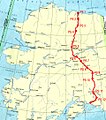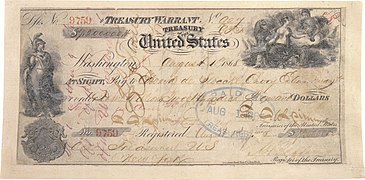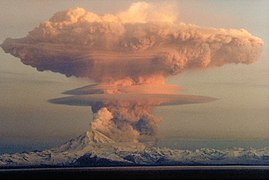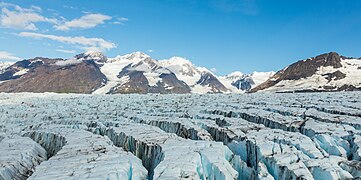Portal:Alaska
 Introduction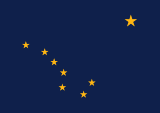   Alaska (/əˈlæskə/ ⓘ ə-LASS-kə) is a non-contiguous U.S. state on the northwest extremity of North America. It borders the Canadian province of British Columbia and the Yukon territory to the east; it shares a western maritime border in the Bering Strait with Russia's Chukotka Autonomous Okrug. The Chukchi and Beaufort Seas of the Arctic Ocean lie to the north and the Pacific Ocean lies to the south. Technically a semi-exclave of the U.S., it is the largest exclave in the world. Alaska is the largest U.S. state by area, comprising more total area than the next three largest states of Texas, California and Montana combined, and is the seventh-largest subnational division in the world. It is the third-least populous and most sparsely populated U.S. state, but is, with a population of 736,081 as of 2020, the continent's most populous territory located mostly north of the 60th parallel, with more than quadruple the combined populations of Northern Canada and Greenland. The state contains the second-largest and largest cities in the United States by area: the state capital of Juneau, and its former capital, Sitka, respectively. The state's most populous city is Anchorage and approximately half of Alaska's residents live within its metropolitan area. Indigenous people have lived in Alaska for thousands of years, and it is widely believed that the region served as the entry point for the initial settlement of North America by way of the Bering land bridge. The Russian Empire was the first to actively colonize the area beginning in the 18th century, eventually establishing Russian America, which spanned most of the current state, and promoted and maintained a native Alaskan Creole population. The expense and logistical difficulty of maintaining this distant possession prompted its sale to the U.S. in 1867 for US$7.2 million (equivalent to $157 million in 2023). The area went through several administrative changes before becoming organized as a territory on May 11, 1912. It was admitted as the 49th state of the U.S. on January 3, 1959. Abundant natural resources have enabled Alaska—with one of the smallest state economies—to have one of the highest per capita incomes, with commercial fishing, and the extraction of natural gas and oil, dominating Alaska's economy. U.S. Armed Forces bases and tourism also contribute to the economy; more than half the state is federally-owned land containing national forests, national parks, and wildlife refuges. It is among the most irreligious states, one of the first to legalize recreational marijuana, and is known for its libertarian-leaning political culture, generally supporting the Republican Party in national elections. The Indigenous population of Alaska is proportionally the second highest of any U.S. state, at over 15 percent, after only Hawaii. (Full article...) Entries here consist of Good and Featured articles, which meet a core set of high editorial standards.
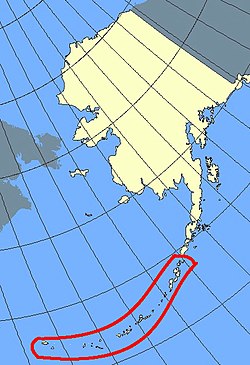 The military history of the Aleutian Islands began almost immediately following the purchase of Alaska from the Russian Empire by the United States in 1867. Prior to the early 20th century, the Aleutian Islands were essentially ignored by the United States Armed Forces, although the islands played a small role in the Bering Sea Arbitration when a number of British and American vessels were stationed at Unalaska to enforce the arbitrators' decision. By the early 20th century, a number of war strategies examined the possibility of conflict breaking out between the Empire of Japan and the United States. While the Aleutian Islands were seen as a potential staging point for invasions by either side, this possibility was dismissed owing to the islands' dismal climate. In 1922, the Washington Naval Treaty was signed, after which the United States Navy began to take an interest in the islands. However, nothing of significance was to materialize until World War II. In June 1942, the Imperial Japanese Navy invaded and captured Attu Island and Kiska. This marked the first time in 130 years that United States soil was under occupation by a hostile country and was the only two invasions of the United States during World War II. The Americans wanted to recapture the two islands, and in January the following year began their advance by capturing Amchitka without opposition. On March 26, the Battle of the Komandorski Islands ensued after the United States Navy imposed a naval blockade on the two islands to reduce the opportunities for the Japanese to keep their Attu and Kiska bases supplied. In May, Attu Island was recaptured, with a total of almost 3,000 deaths from both sides combined. The Americans then prepared to attack Kiska in August, only to find that the entire island had been evacuated by the Japanese in late July. During the recapture of Kiska by the United States, 92 men died as a result of friendly fire and a mine, despite no Japanese soldiers being present on the island. During the 1960s and early 1970s, the United States Atomic Energy Commission (AEC) executed a number of nuclear tests on the island of Amchitka in the face of vehement opposition from environmental and local indigenous groups. The first test, conducted in 1965, caused significant damage to the surrounding area, although the details of this damage were not released to the public until 1969. In 1969, the AEC executed a 'calibration shot' to determine whether Amchitka would be suitable for future tests. In 1970, the AEC announced plans to detonate a bomb named 'Cannikin', set to release a blast 385 times that released by the dropping of an atomic bomb on Hiroshima in 1945. After a United States Supreme Court challenge to the testing failed by one vote, the testing proceeded as scheduled in November 1971. (Full article...)TopicsCategoriesSelected article -Theodore Fulton Stevens Sr. (November 18, 1923 – August 9, 2010) was an American politician and lawyer who served as a U.S. Senator from Alaska from 1968 to 2009. He was the longest-serving Republican Senator in history at the time he left office. Stevens was the president pro tempore of the United States Senate in the 108th and 109th Congresses from 2003 to 2007, and was the third U.S. Senator to hold the title of president pro tempore emeritus. He was previously Solicitor of the Interior Department from 1960 to 1961. Stevens has been described as one of the most powerful members of Congress and as the most powerful member of Congress from the Northwestern United States. Stevens served for six decades in the American public sector, beginning with his service as a pilot in World War II. In 1952, his law career took him to Fairbanks, Alaska, where he was appointed U.S. Attorney the following year by President Dwight D. Eisenhower. In 1956, he returned to Washington, D. C., to work in the Eisenhower Interior Department, eventually rising to become Senior Counsel and Solicitor of the Department of the Interior, where he played an important role as an executive official in bringing about and lobbying for statehood for Alaska, as well as forming the Arctic National Wildlife Range. After unsuccessfully running to represent Alaska in the United States Senate, Stevens was elected to the Alaska House of Representatives in 1964 and became House majority leader in his second term. In 1968, Stevens again unsuccessfully ran for Senate, but he was appointed to Bob Bartlett's vacant seat after Bartlett's death later that year. As a senator, Stevens played key roles in legislation that shaped Alaska's economic and social development, with Alaskans describing Stevens as "the state's largest industry" and nicknaming the federal money he brought in "Stevens money". This legislation included the Alaska Native Claims Settlement Act, the Trans-Alaska Pipeline Authorization Act, Title IX, gaining him the nickname "The Father of Title IX", the Alaska National Interest Lands Conservation Act, and the Magnuson–Stevens Fishery Conservation and Management Act. He was also known for his sponsorship of the Amateur Sports Act of 1978, which established the United States Olympic & Paralympic Committee. (Full article...)Selected picture -General imagesThe following are images from various Alaska-related articles on Wikipedia.
Recognized content
Featured articlesGood articles
Featured pictures
Former featured pictures
Related Portals
Related WikiProjectsState facts
State symbols:
Tasks
Associated WikimediaThe following Wikimedia Foundation sister projects provide more on this subject:
Discover Wikipedia using portals |

















